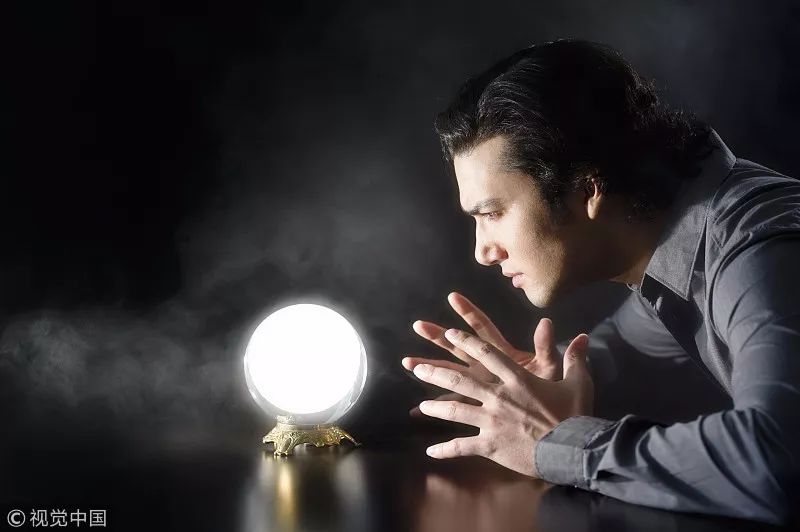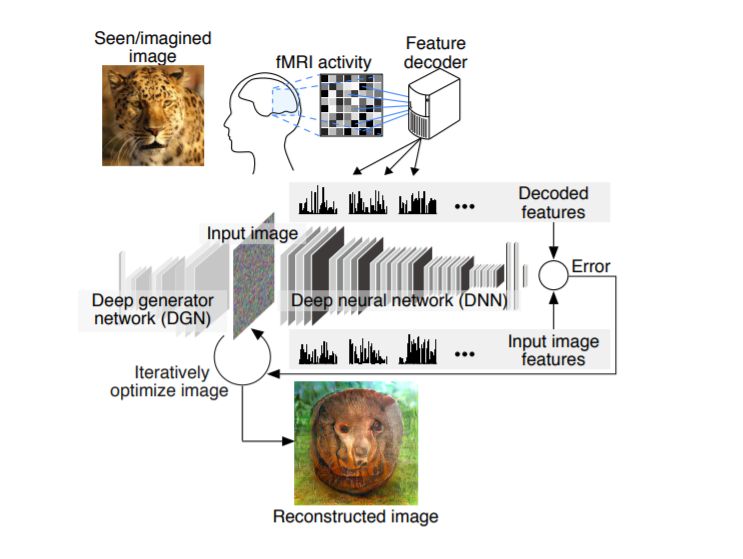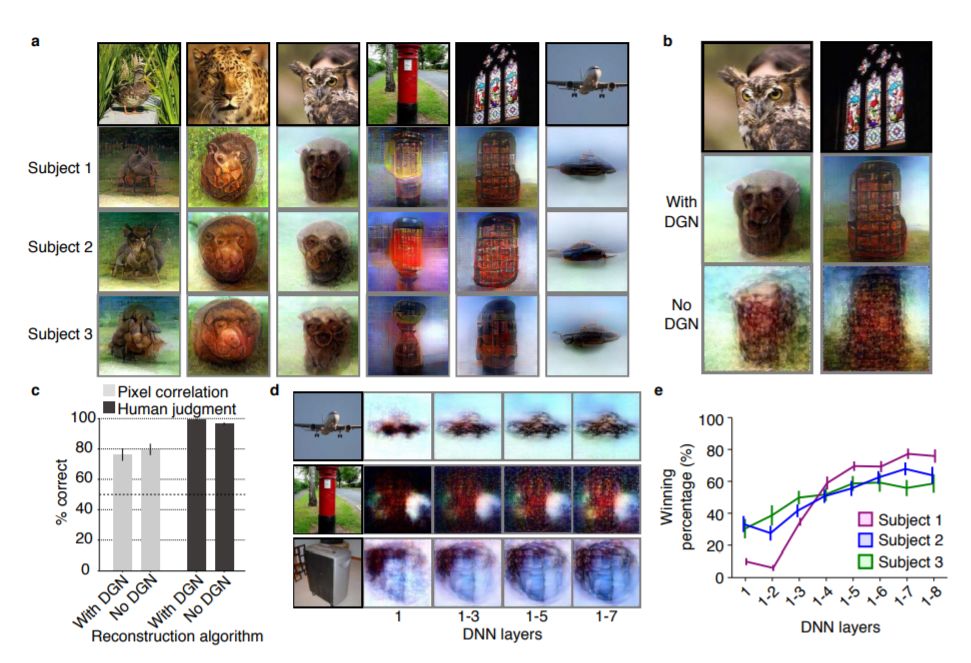
Imagine that there are thousands of unclassified photos in your computer, but as long as you imagine the first flower-like face in your mind, the system can automatically find the photo for you. Or, you don't need to mention the pen, you can draw a sketch of the kitchen design. Even give your lover a beautiful sunset, even though you have never taken this photo.
Obviously, computers that can read what humans are thinking (reading minds) can be useful in daily life, especially for people with disabilities, who urgently need an efficient communication tool.
Although these scenes sound very dreamy, scientists are trying to get closer to this dream.
Today, scientists from Kyoto University in Japan have created an algorithm that can interpret and accurately reproduce images that others see or imagine. This technology may still take decades to put into practical use, but researchers are one step closer to this system that can project our inner world.


Zhongming Liu, a computer scientist at Purdue University in Indiana, USA, commented: "It worked very well, which impressed me." Previously, Zhongming Liu developed an algorithm that could reproduce the concept of movie lovers to some extent. What you see when you are filming.
In fact, using algorithms to decode mental images is not new. Since 2011, researchers have reconstructed images, photos, and even dreams by matching brain activity to activities recorded when viewing images earlier. However, these methods have significant limitations: some methods can only handle face types, and some methods must choose from pre-set pictures and categories, but not from the beginning.
This time, the work can immediately generate images and even reproduce the shape of the figure in the human imagination rather than the eye.

To figure out what one is seeing, researchers at Kyoto University used functional magnetic resonance imaging (fMRI) to measure blood flow in the brain as a measure of brain activity. In the experiment, the researchers asked the three testers to observe more than 1,000 images at a time and repeat them several times, and then mapped out the visualization processing area with a resolution of 2 mm. The goal is to look at the brain's activity as it thinks about the image and let the computer build an image that will allow the brain to produce the same activity.
The computer will repeatedly modify the drawn image until it is correct. In addition, the research team has built a software platform for the brain - a deep neural network (DNN). Yakiyasu Kamitani, a neuroscientist at Kyoto University in Japan and author of the paper, said: "We believe that deep neural networks can represent the hierarchical processing of the brain well. By using DNN, we can extract from different levels of the brain vision system. Information." From simple light contrast to human face, this information belongs to.
Using a decoder, the researcher can create a representation of the human brain's response to the image, except that the representation exists in the DNN. From then on, the researchers no longer need to perform fMRI measurements, and DNN can be used to convert them.
When the system guesses what someone is looking at, the "translation" here acts as a template and no longer requires fMRI data. The system then tries to draw the image and then triggers the DNN to match the template, and the process repeats until we draw the image we want.
In the beginning, the system randomly generates images, and then continually refines and refines the image for a total of 200 rounds. To bring it closer to the ideal image, the system compares the DNN activity to the template DNN activity and automatically calculates the difference between the two to fit a pixel and know the image that is close to the ideal.
To make the final imaging more accurate, the researchers developed a Deep Layer Generator Network (DGN) that has been pre-trained to produce realistic imaging based on input. DGN will refine these images to make them look more natural. Researchers say that once a DGN is added, a neutral human observer can easily tell which of the two images we want to rebuild, and the accuracy is 99%.
Next, the researchers began to try to understand the brain activity when human images were imagined. How to conduct this research? They asked the participants to recall the images they had shown before, including a fish, an airplane, and some simple color graphics, and then scanned their brains in turn. Experiments have shown that this method is not suitable for complex photos, but it is very effective for graphics. Research shows that the generator can generate a recognizable image 83% of the time.
First, the pixel values ​​of the input image are optimized so that the DNN features of the image are similar to those decoded from the fMRI activity record. The depth generator network (DGN) can then be selectively combined with the DNN to generate a natural picture, where the optimization process is performed at the input layer of the DGN.

Figure 1: Depth image reconstruction.

Figure 2: Natural image reconstruction. The black and gray boxes represent the displayed image and the reconstructed image, respectively.

Figure 3: Shape reconstruction seen by the human eye. The black and gray boxes represent the images displayed and reconstructed, respectively.
Figure 4: Image reconstruction. The black frame and the gray frame represent the target image and the reconstructed image, respectively.
Nikolaus Kriegeskorte, a computational neuroscientist at the Zuckerman Institute at Columbia University, considers this to be an "interesting and cautious" job, but he raises his own questions: inaccuracies in computer-generated images, and the brain The limits of activity measurement, how relevant they are, and to what extent they reflect how our brain misinterprets images.
Kriegeskorte said: "The higher resolution fMRI combined with other brain imaging techniques may further improve the current results. With the advent of more advanced measurement methods and the continuous improvement of algorithms, we may communicate through mind images in the future.
Best Budget I7 Laptop is everyone eager to. Laptop Intel Core i7 is the No. 1 processor clients choose when they are searching for a performance Gaming Laptop,cause it`s of excellent powering, bigger Solid State Drive, usually 512GB based, full HD 16:9 aspect ratio slimmer display bezels, bigger battery-12000mAh-no need to worry lack of power, fingerprint reader, backlight keyboard, etc. What is intel Core I7 Laptop Price? Usually 300-400usd. You can get Intel i7 11th Generation Laptop, Intel i7 10th Generation Laptop, Intel I5 11th Generation Laptop, Laptop I3 11th Generation,etc. 15.6 or 14 inch all available for i7 processor.
Cooperating with us, you just need to share all your requirements details, like size, cpu, ram, rom, battery, fingerprint, backlight, enter button numbers, SSD+HDD or only SSD ok, if need oem service, if need logo position, special apps preinstall if need, etc. Can provide matched and value feedback in 1-2 working days.
The reason why clients choose us is that just half of DOA than others, longer warranty time, smaller MOQ, fast delivery, competitive cost, good after-sale service, etc.
Laptop Intel Core I7,Intel Core I7 Laptop Price,Best Budget I7 Laptop,Intel I7 11th Generation Laptop,Intel I7 10th Generation Laptop
Henan Shuyi Electronics Co., Ltd. , https://www.shuyielectronics.com